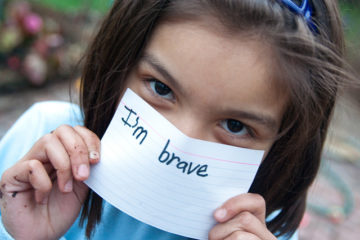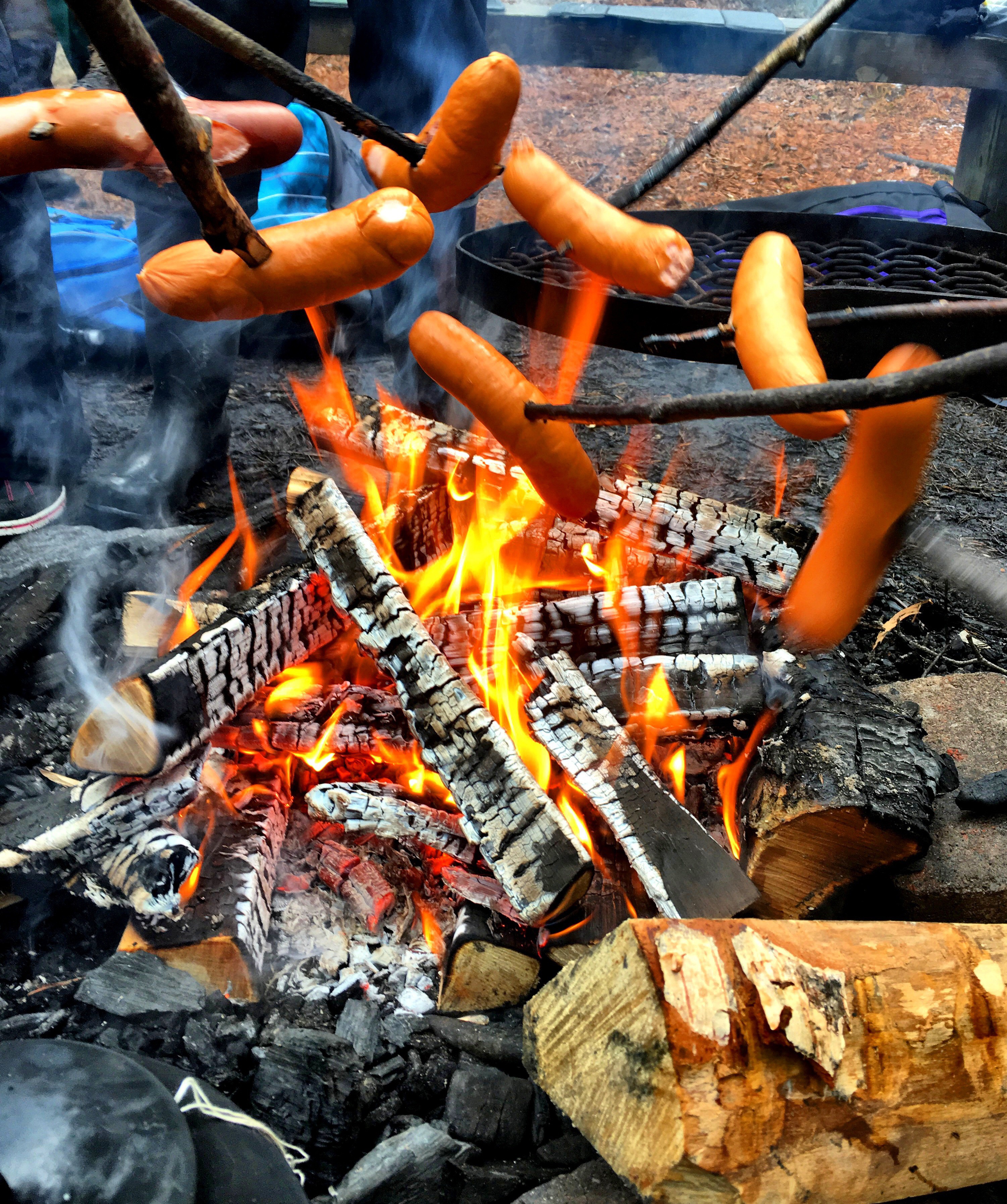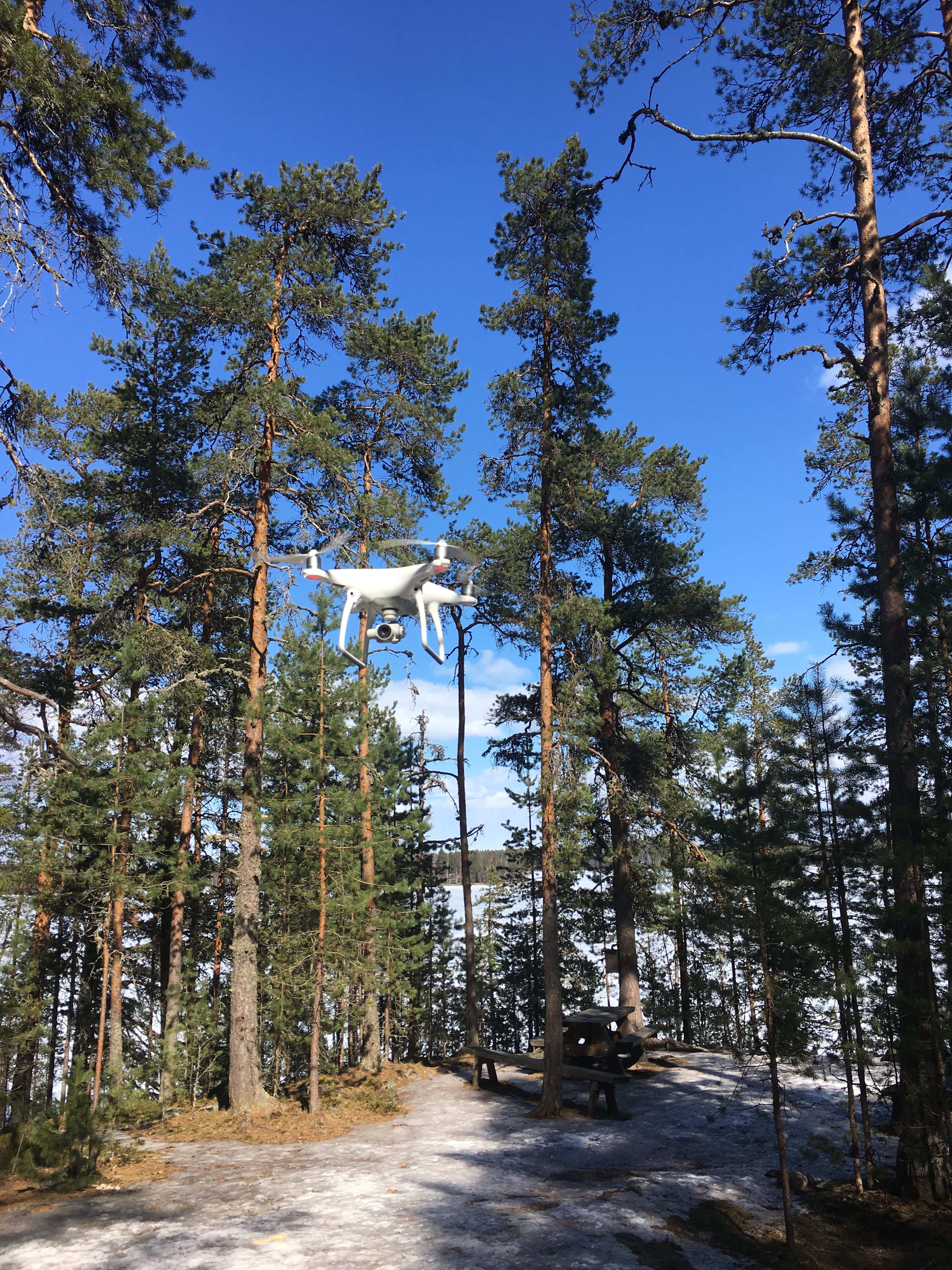“We do not learn from experience…we learn from reflecting on experience.” ― John Dewey
With each “Finnish” experience I have had, a great deal of reflection has accompanied it. I think this is why I am so intrigued by Tiina’s photo project. Not only has it allowed me to reflect on my own views of “Finnishness”, but it has been a topic of many conversations with people from all nationalities.
Here I would like to share my own story of “Finnishness”. But first, a little background on the photo project.
The Photo Exhibition.

The photo exhibition will be displayed on panels outlining the construction of the new market square in Joensuu’s city center.
As part of her thesis for her visual communications degree, Tiina has put together a photo project and exhibition titled “Finnishness as seen through the eyes of foreign students” (or “Suomalaisuus ulkomaisten opiskelijoiden silmin” in Finnish). When she first told me about the project, I was immediately intrigued. First, she asks her participants to reflect on their idea of Finnishness. What does it look like, and how would one capture it in a photo? After reflecting, the participants then take photos that would best represent this idea of Finnishness. Finally, after choosing 2-3 key words that represent Finnishness and places that would reflect these images, she takes portraits of you in those places. Her goal is to have representatives from each continent as part of her project, which will be on display in Joensuu’s city center this spring. Check out an article in our local paper (written in Finnish, however).
Finnish Reflections
In the text I submitted to Tiina for her photo exhibition, I was asked to reflect on words and images that might describe “Finnishness” to people who have not been to Finland. As I brainstormed my list of words, here is what came to mind.

“Finnishness”, as captured in a water droplet. Water is a key feature of Finland, as evidenced by the many lakes and rivers that you find throughout the country.
My “Finnishness” Images
Next, I had to find 6 images that I have taken during my time here that represent my idea of Finnishness. I wanted images that reflected the words I had chosen: nature, reflection, silence, food in a culture, simplicity, genuineness, and loyalty. After carefully combing through photos I have taken over the last three months, I found photos that would help tell my “Finnishness” story.
“Quiet”

Quiet
Surrounded by thick snow and giant trees, I hear only the crunch of my boots as I walk along the snow-covered path. And all I could think about was, “I am in a winter wonderland”. The quiet that was offered by the thick snow and dense trees made me fall in love again with nature.
Koli National Park is a winter wonderland dream, and walking through the heavy snow-laden trees had a certain peacefulness to it. This photo represents nature, peacefulness, and quiet.
“Beauty in Simplicity”

Beauty in simplicity
A birch tree is a symbol of renewal and new beginnings, and is the national tree of Finland. It was a requirement in my “Finnishness” photos, for it is not only a national symbol. Birch wood is used in school craft classes and for building, and the young branches make excellent switches for use in a summer sauna. You can even find young birch saplings on the porch to mark the famous Midsummer’s Day.
Sunsets such as this one are rare in the dark Finnish winters, and must be appreciated. The combination of birch trees backed by a stunning sunset shows the simple beauty that makes up this country.
For me, this photo also holds a story of a friendship that has been formed with a Finnish Fulbright Teacher, Maija, who studied in the US this past fall. This photo was taken when I visited Maija in her hometown of Hämeenlinna. It is a reminder that when you make friends with a Finn, you have a friend for life.
“Reflection”

Reflection
Silence speaks words. Finns are very careful with their selection of words, as small talk is one thing that is typically avoided in conversation. Small talk has been something I have always struggled with as an introvert, and have felt no pressure to engage in small talk here. The awkward silences that can often come along with this lack of small talk, however, have taken some getting used to. However, it is the silence that speaks, and the silence that allows for this time of reflection.
Just about every Finn owns a summer cottage near a body of water. Some are fortunate enough to live on the water year-round. This view in Nittylahti (just outside of Joensuu) is one I have come to appreciate as it changes with the seasons. The vast openness of the thick ice that covers the lake allows you to see for what feels like miles, and offers a peaceful place for reflection.
“Blue and White”

Blue and white
Blue and white are found in the simple design of the Finnish flag, and are colors representative of two things found everywhere in Finland: snow and water.
Lakes and rivers are also found everywhere in country, and it has been a blessing to live so close to water again. Just take a look at a map of Finland, and you can see that water makes up about 10% of the country (as opposed to 7% of the USA).
 I saw this image the other day of the Finnish seasons: winter-winter, winter, spring, and winter. Here in Joensuu, there is still snow on the ground and we’ve had a little bit of snow for the past several days. Snow can continue to be found in Lapland through May and even June.
I saw this image the other day of the Finnish seasons: winter-winter, winter, spring, and winter. Here in Joensuu, there is still snow on the ground and we’ve had a little bit of snow for the past several days. Snow can continue to be found in Lapland through May and even June.
“Learning Through Food”

Learning through food
Food. What better way to get to know a culture than through food. Food brings people together, it creates dialogue, it indicates celebrations, and it gives a glimpse into a culture. The infamous Finnish rye bread, for example, can be found in its many forms in different regions of the country.
The night I met Tiina and Yundan, I also learned how to make Karjalanpiirakka, or, Karelian pies. A staple throughout Finland (originating from the Karelian region), these simple “pies” (savory rather than sweet) can be eaten anytime of day for any occasion. They are traditionally made with a rye dough crust and filled with barley and baked in the oven. Nowadays, they are typically filled with rice porridge instead of barley. I’ve often found them served in hotels for breakfast, and any bakery will carry them. They are best eaten warm with a little egg butter on top- delicious! Food is one of the many ways Finns like to share their culture with visitors.
“Independence in Education”

Independence in education
Finally, the crafts classes, a place of independence and creativity. An integral part of the Finnish education system, this picture of a student working in crafts class captures many things: the high standard of excellence found in Finnish schools, the independence and responsibility allotted to students and teachers, and building with wood, which is abundant in Finland.
I wrote a whole post about crafts class, one of my favorite places to observe. A place for students to create, Finland has had makerspaces long before the term was even coined.
It was difficult to select only 6 images to display “Finnishness”, for there are many ways it can be portrayed. My final words, however, were to be saved for the photo shoot with Tiina.
The Photo Shoot.

Walking on water
The final part of the “Finnishness” photo project was a photo shoot with Tiina. In this part of the project she asked me to pick a couple of words I thought best reflected my idea of “Finnishness”. With those terms, I was to pair places that represented those words.
Trust and responsibility. These two words are seen time and time again in Finnish culture. They are seen in schools as students build their own creations in crafts classes, or clean up their lunch trays after eating. They are seen on the trains when tickets are randomly checked; you are on your honor to make sure you have one at all times. Or they can be seen at the huts and shelters found in forests throughout the country, which all people are free to use.
I decided on two places to reflect these themes: school and nature. Not only are these places I have seen these words reflected, but they are also places that are significant to the Finnish culture.
The Finnish education system is one of the top in the world, because of the system of trust and support that is in place. Struggling students receive support from early on and the teachers receive a high level of training to become teachers. They must have a Master’s Degree to teach and only the top few percent of students are admitted to teacher training programs. Teachers are trusted and given a high level of autonomy to choose their curriculum and design their own content as they see best for kids.
As most of the country is covered with either forests or water, you can see how easy it is for Finns to get out in nature. And, with “jokamiehenoikeus”, or, “Everyman’s Right”, it’s even easier. This ancient code allows people to hike, ski, cycle, canoe, or camp in wilderness areas with one caveat: They must behave responsibly. (There are, however, a few restrictions in National Parks and protected areas).
Tiina and I headed off to the forest and to a local elementary school to capture images of trust and responsibility. I will end with a selection of her photos, and let you as a reader reflect on your learnings of “Finnishness”.
Go back to Finnishness Part 1: The Experiences


